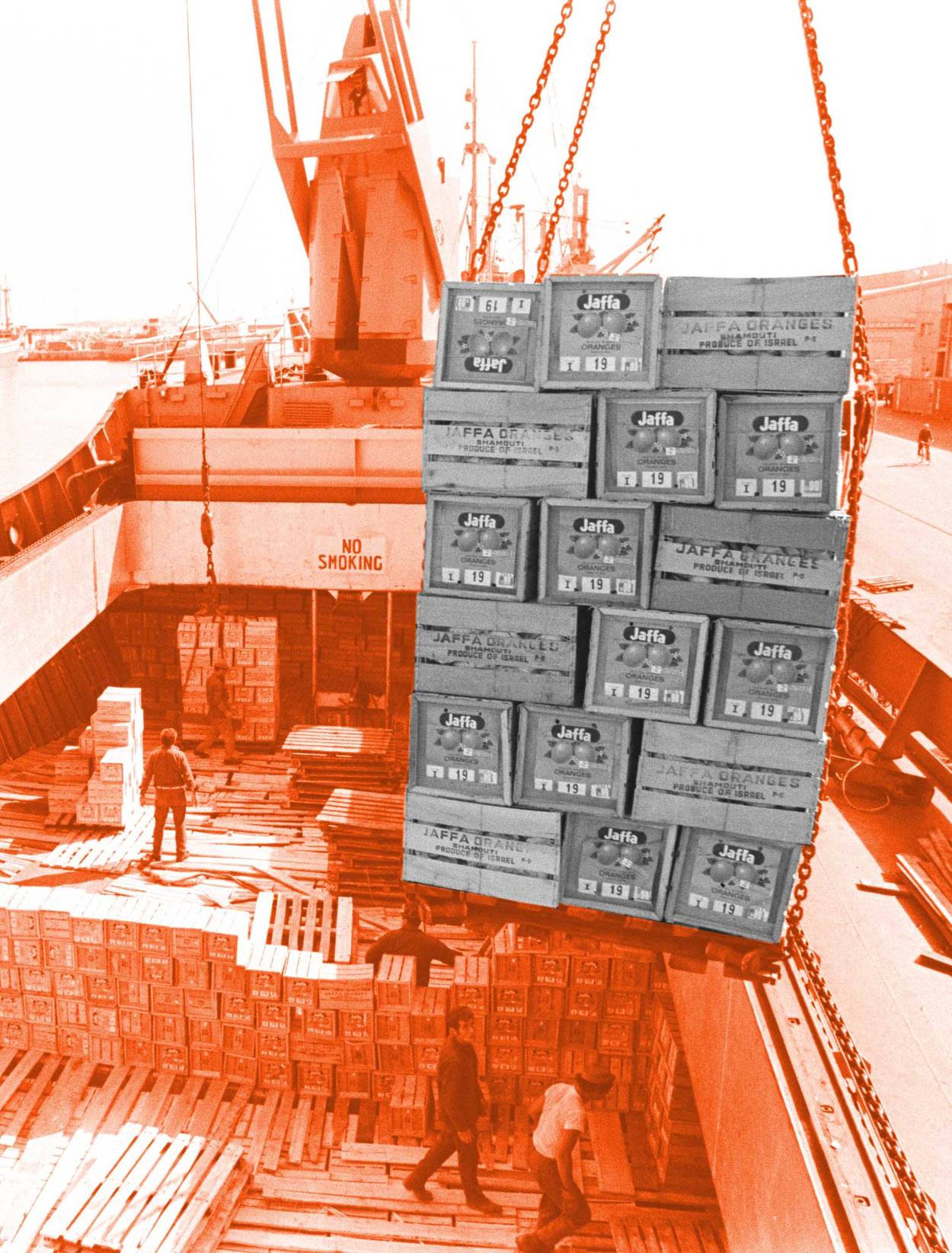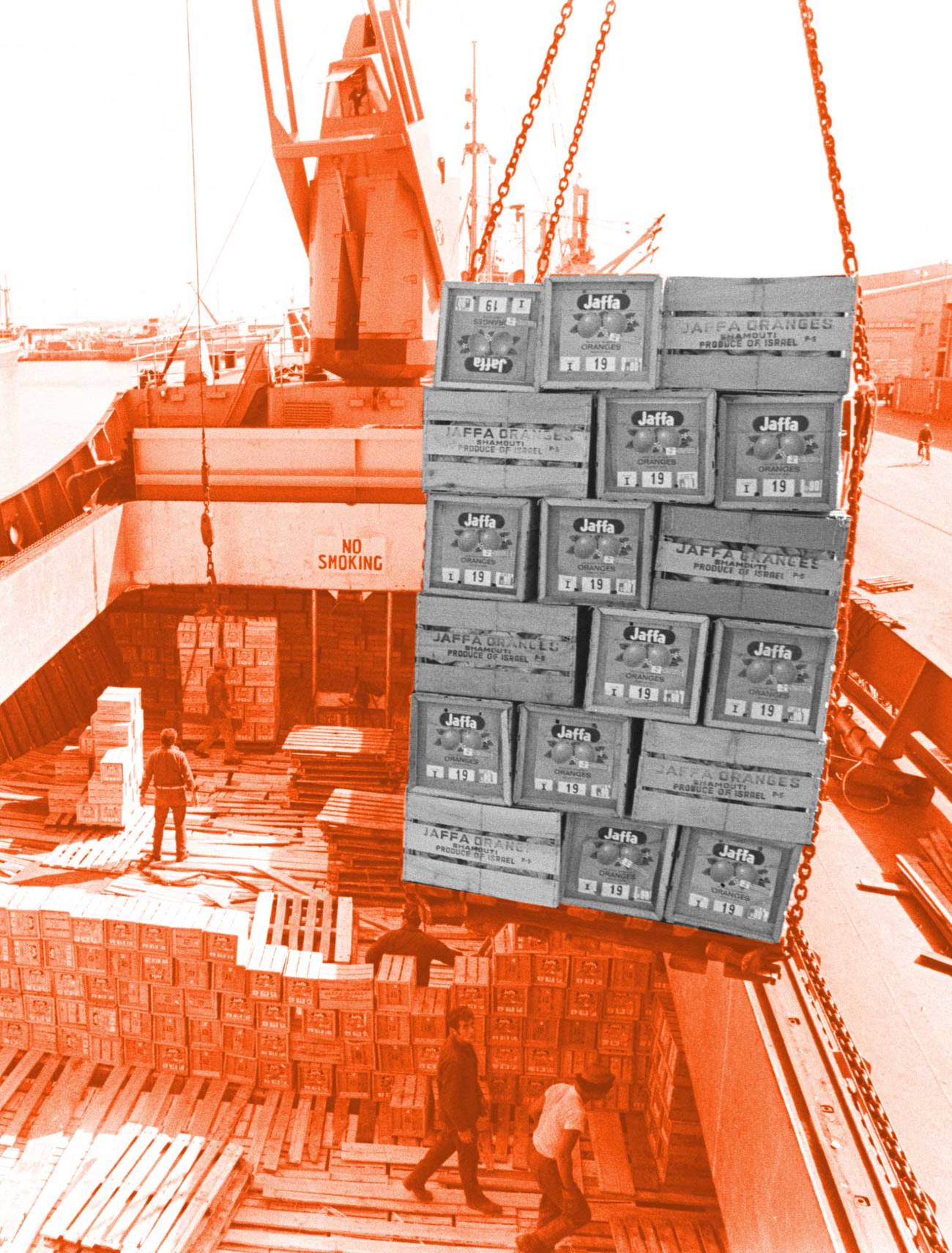The Rise and Fall of Israel’s Oranges
The country’s iconic fruit is on the decline




In the summer of 1974, my parents and I spent two days on an army base near Vienna. Run by the Jewish Agency and heavily guarded by the Austrian military (in the wake of a recent terror attack), the base was used as a transit camp for Soviet Jews on their way to Israel, like my family. These 48 hours were full of unforgettable “firsts”: hearing Hebrew spoken, meeting Israelis, or seeing a plane with a Star of David on its tail. One such moment occurred at the end of our first dinner. The servers came out carrying large baskets and handed every one of us an orange with a tiny green sticker that read “Jaffa.” I have no memory of what it tasted like (not great, I imagine, as summer is not the citrus season, and the fruit must have spent months in cold storage), but it didn’t matter. As I put an orange segment in my mouth, I knew that I wasn’t just having my first taste of Israel, but was ingesting a Zionist symbol.
The next day, on our El Al flight to Tel Aviv, female flight attendants wore bright orange skirts, orange striped tops, and funny orange colored hats. Someone explained to us that their unusual uniforms were an homage to Jaffa oranges.
Oranges and other citrus made a big impression during my first year in Israel. I learned that Israeli autumn smells like tangerine peels and the short Israeli spring is scented with citrus blossom. I had my first taste of freshly squeezed orange juice that I bought at a market stall, and on a chilly December morning, took a stroll through a pardess (Hebrew for the orange grove). It had just stopped raining, the soil was muddy, and freshly showered trees, heavy with fruit, glistened under the wintry sun. I plucked an orange and ate it, and it was perfect.
Many fruits that grow in Israel have interesting stories behind them, but none is as intimately woven in the fabric of local history as oranges. For Israelis, oranges are more than food, they are part of their identity and the stuff of their childhood memories; and yet if you ask an Israeli when she last ate an orange, she would probably shrug and admit it has been awhile. But I am getting ahead of myself.
The first citrus that arrived in the region around the second century BCE was citron, and it was grown strictly for ritual purposes. Sour oranges arrived some 800 years later with Arab conquerors, but became pervasive in the 15th-16th centuries, when Portuguese merchants introduced sweet varieties to the Mediterranean region. This is why in Arabic oranges are called burtaqal. By the end of the 18th century, oranges and lemons grew in many locations around Palestine, and those that came from the ancient town of Jaffa were considered especially tasty. In the middle of the 19th century, a wealthy orange grower, Anton Ayub, noticed that on one of his trees grew curious looking fruit: large, oval shaped, with few seeds, and—most importantly—thick skins, which made them well suited for travel. He grafted the tree with other local varieties and called the new breed shamouti. An export firm owned by Templers, members of a German Christian society who settled in Palestine in the 19th century, was the first to use the brand name “Jaffa” in 1870. In a span of a few decades, Jaffa oranges achieved global fame and even made their way to Queen Victoria’s table. They started their journey in the ancient Jaffa port, initially in burlap sacks and later in wooden crates, with each fruit carefully wrapped in tissue paper to prevent spoilage.
The first Jewish-owned orange grove was purchased in 1855 by the legendary Jewish British philanthropist Moses Montefiore; Baron Edmond de Rothschild also encouraged and financed planting and purchasing of orange groves by Zionist settlers. On the eve of WWI, there were almost 7,500 acres of orange groves in Palestine, of which about a third were in Jewish hands. The years between the world wars were the golden years of the Jaffa brand. Successfully cultivated by both Jews and Arabs, citrus accounted for 75% of all exports from Palestine. An annual citrus exhibition, reported in local papers and endorsed by the authorities, celebrated the best of the local fruit and handed out generous prizes. As the prestige of the brand grew, fake Jaffas started to pop up around Europe. In September 1928, The Palestine Bulletin reported several occasions of orange frauds, one of them in a village in northern Scotland. “Upon entering a small village grocery store, my friend was attracted by the notice ‘Jaffa Oranges,’” wrote the reporter. “My friend who is well acquainted with our oranges, saw immediately that the round fruit were no Jaffas. He thereupon asked the saleswoman: ‘Are you sure that these are Jaffa oranges?’ ‘Quite sure,’ she replied, ‘these are our best oranges.’ In her vocabulary the very first quality oranges and Jaffas are apparently synonymous.”
In the course of WWII and Israel’s War of Independence in 1948, the citrus industry fell into decline: Trade connections between Palestine and its export markets were severed, irrigation systems deteriorated, yields were low, and the quality was a far cry from its former glory. During the War of Independence, many Arab orange growers fled Palestine, and the Jaffa orange, formerly a symbol of Jewish-Arab collaboration, became in the eyes of the Palestinians a symbol of the forced exodus from their homeland.
Meanwhile, in the newly founded State of Israel, there was a surge of citrus planting. By the early 1970s, citrus covered more than 100,000 acres, and about a million tons of Jaffas were exported annually. By that time, oranges evolved into one of the icons of the young Israeli society, celebrated in countless poems, stories, children songs, paintings, and films.
School children were often drafted to help with the citrus picking. “We were made to believe that the future of Israeli agriculture lays in our hands,” recalled my husband, Ilan, who took part in several fruit-picking operations. “One bad orange will not just spoil the whole crate, but imperil our reputation as the best orange growers in the world.” Spells of winter frost that could damage the oranges made headlines, while news of droughts or floods in Spain, Israel’s biggest rival on the citrus market, were a cause for celebration.
However, this success was short-lived. By the 1980s, oranges and other Israeli citrus experienced a series of blows, springing from fierce competition and restrictive trade agreements. The main citrus growing area is the densely populated coastal and Sharon plains, both in the center of Israel. As prices of real estate shot up, many farmers chose to sell their lands to developers. Others opted for the increasingly popular easy-peelers or tried their luck with pomegranates or avocados.
Numbers published by the Israeli Citrus Growers Board tell the story. Only 42,000 tons of oranges were picked in the 2019/2020 season, as opposed to 180,000 tons of tangerines; a meager 2,000 tons of oranges were exported, as opposed to a whopping 97,500 tons of tangerines. More than half of the locally grown oranges are used for juice, making thin-skinned juicy Valencias more attractive to the market. When Israelis (and I suppose not just Israelis) crave a citrus snack, they easily peel a tangerine. Local tangerines are indeed fantastic, especially Or (aka Ori) variety, the current prince of the Jaffa brand. Oranges, on the other hand, are kind of labor intensive: You need a knife to peel them and some practice to get it right, plus they make your fingers sticky. Also, because freshly squeezed orange juice is sold in every grocery store, eating the actual fruit seems a little bit like eating the “raw material.”
So when did you last eat an orange? And what was it like? Let me help you remember. Nachum Guttman, a celebrated Israeli painter and children writer, wrote the following (very) short story. It was published in a popular Israeli children weekly Davar Leyeladim. Translation is mine, with a few brief omissions.
How to Eat an Orange
Place an orange in your right hand, and cover it with your left. Rub it gently—the skin will turn shiny and your palms—smell them—the fragrance will make your chest swell. Now hold the orange with your fingertips and lift it against the sky. Caress it with your eyes. Its color dominates like the sun against the backdrop of blue. The fruit is whole, round, heavy. The tiny dense bumps on its surface glint and burst with life.
Take a pocketknife and insert its pointy blade precisely where the North Pole should be. With your left hand, slowly turn the orange on its axis. Remove the cap; it releases easily, with a soft rustle, and reveals a little white tassel attached to it. The smell of the fruit arises as if a bottle of perfume has been broken … Now it is time to follow the meridians. Gently plunge the blade into the peel, but carefully, you don’t want to bruise the flesh. Let your fingertips sink into the soft pith and reveal the heart—protected and safeguarded just for you all summer. The rosy heart is wrapped in a soft white duvet, and it smiles like someone who is just awakening from a pleasant dream ... Go ahead, remove the blanket and let the heart rest heavy and translucent in your palm. But, wait, wait a second, don’t you find that the orange peels look like little golden boats, padded with white and waiting for the wind to carry them away? Now slowly split the fruit into segments. In each you will find tiny vials—dense and shiny, their elongated shapes resting snugly within, playful and juicy. So look around, see that all agree with you that the world is beautiful, and put the fruit in your mouth.
Janna Gur is a Tel Aviv-based writer and journalist. She is the author of The Book of New Israeli Food, Jewish Soul Food from Minsk and Marrakesh, and Shuk (with Einat Admony).